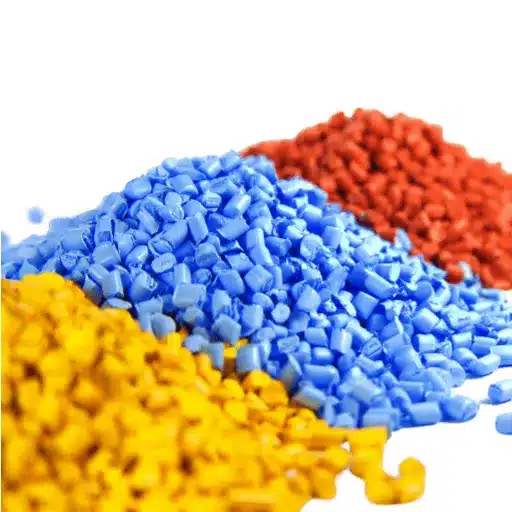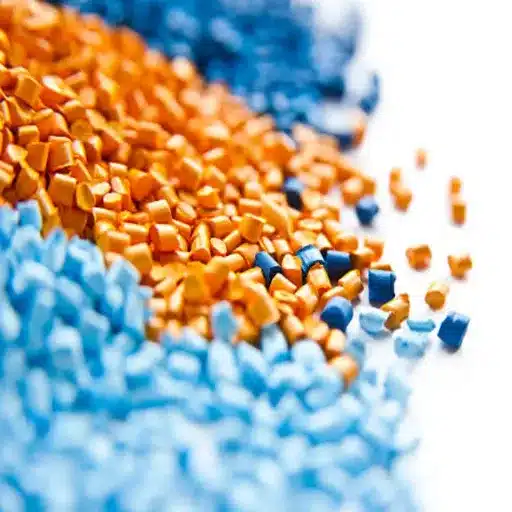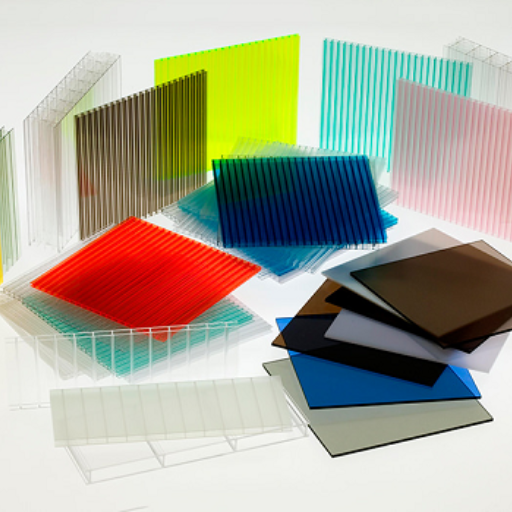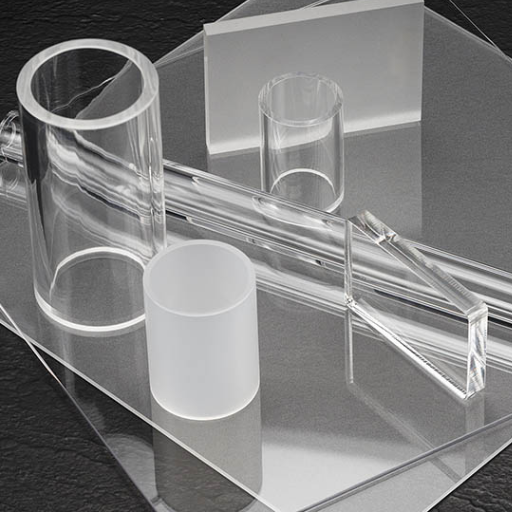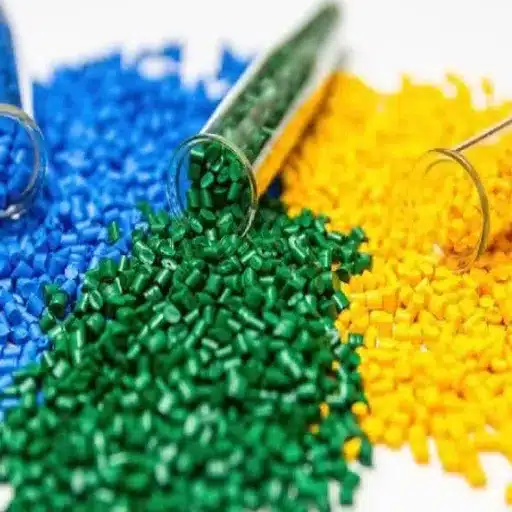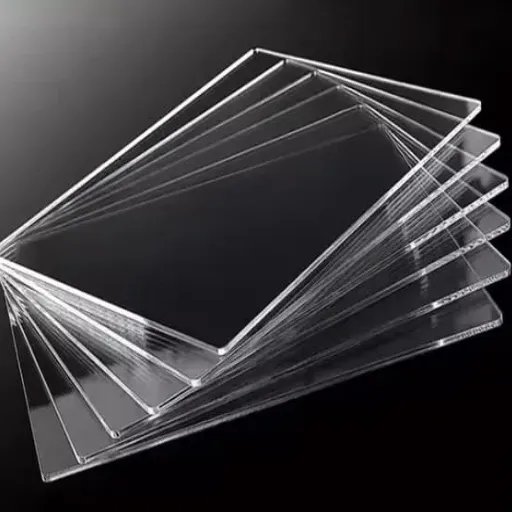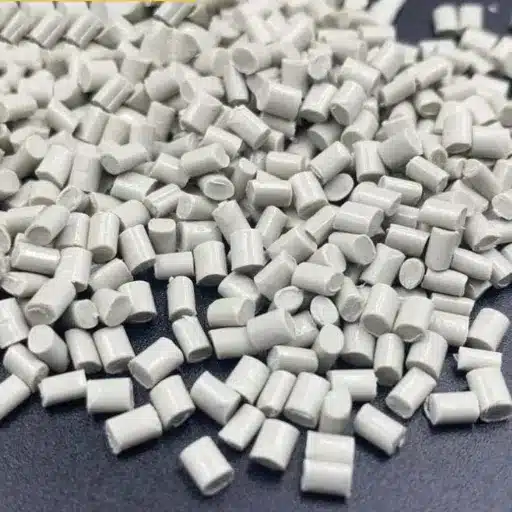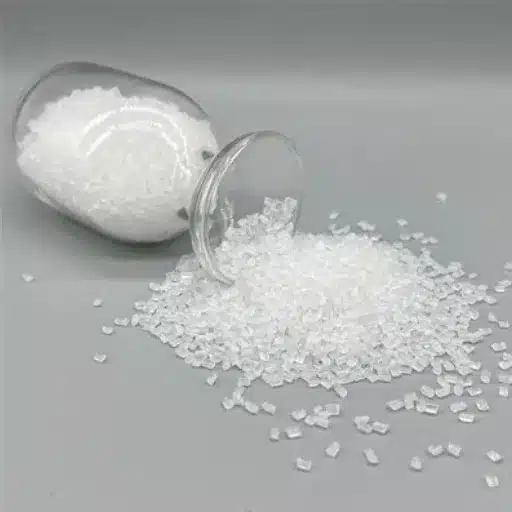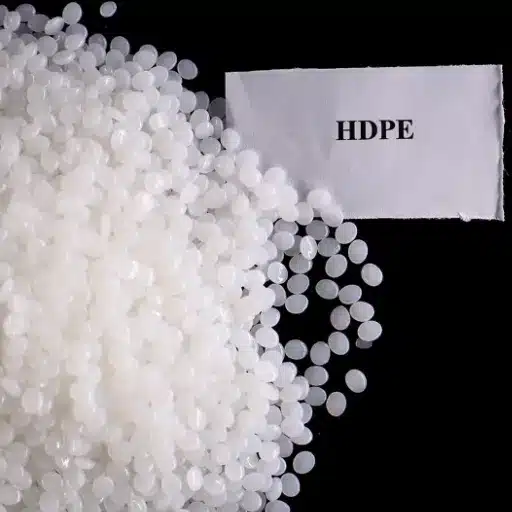Among the various materials that are versatile and durable and thus used in many areas of industry, ABS plastic is the one that shines most brightly. This exceptional thermoplastic has made it possible to design and produce automotive parts and consumer products, among others, in a completely different way. But what are the excellent qualities of ABS? What is the reason for its being the most favorite material in such a wide range of applications? In this article, we will be revealing the meaning behind the term ABS plastic, the properties that give it a distinctive character, and the sectors where it is primarily used, thus becoming necessary both in daily and specialized industries. If you’re a passionate beginner or an expert wanting to broaden your understanding, this document will certainly open up the great advantages that ABS plastic offers.
What is ABS Plastic?

Definition of ABS Plastic
ABS plastic, or Acrylonitrile Butadiene Styrene, is a multifunctional thermoplastic polymer which is known for its strength, longevity, and feather-lightness among others. It consists of three principal monomers – acrylonitrile, butadiene, and styrene – which are integrated in such a way as to form the very peculiar characteristics of this plastic.
Key Components and Their Functions:
- ✓ Acrylonitrile: Provides chemical resistance and thermal stability
- ✓ Butadiene: Brings toughness and impact resistance
- ✓ Styrene: Provides a smooth, shiny surface and material rigidity
ABS finds its way into multiple industries including, but not limited to, automotive, construction, electronics, and consumer goods sectors mainly because of its great mix of performance, low cost, and easy processing. Molding is the method of transforming it into different designs, thus being able to serve the purposes that are as diverse as the making of car dashboards and safety helmets to LEGO bricks and kitchen appliances.
Composition: Acrylonitrile Butadiene Styrene
Acrylonitrile Butadiene Styrene (ABS) is a polymer that takes on plastic form by using the three monomers of acrylonitrile, butadiene, and styrene. The involvement of acrylonitrile brings about the killing of chemical attacks and hardening of the material, thus contributing to the durability and strength of the material. One of the prime attributes of butadiene is providing an avenue for the casing to be flexible and tough, which is a vital factor to the material’s impact resistance. Styrene contributes its high point by giving the product its robustness and the shiny layer that attracts the consumers to the product.
The combination of these ingredients results in a material that is not only strong in terms of mechanical properties but at the same time extremely easy to process and cost-effective. ABS is still the material of choice in various industries thanks to its compatibility with different manufacturing processes including 3D printing and injection molding.
How ABS is Made
Acrylonitrile Butadiene Styrene (ABS) is produced by a method called emulsion or continuous mass polymerization. The process includes the three basic monomers – acrylonitrile, butadiene, and styrene which are blended in the right proportions.
Manufacturing Process Overview:
- Monomer Blending: The three monomers are combined in precise proportions
- Polymerization: Monomers undergo polymerization to create long-chain structures
- Pelletization: Raw ABS is converted into pellets for easy handling and shipping
- Final Processing: Material is heated and molded through injection molding, extrusion, or 3D printing
Production methods have improved to such an extent that they allow for accurate control of the ratio of the monomers which in turn leads to the tailoring of ABS according to the application it is to be used for. The versatility of the ABS production process is what guarantees that the material continues to be of the kind the industries and applications are changing.
Properties of ABS Plastic

Physical Properties
ABS (Acrylonitrile Butadiene Styrene) plastic is largely recognized for its remarkable and superior combination of strength, stiffness, and resistance to impact. ABS, which has a density of around 1.04 g/cm³, is the perfect material for a great variety of applications as it is both light and tough.
| Property | Value/Description |
|---|---|
| Density | Approximately 1.04 g/cm³ |
| Impact Strength | Very high – resists sudden shocks without cracking |
| Melting Point | 200°C to 250°C (varies by grade) |
| Dimensional Stability | Excellent |
| Chemical Resistance | Good resistance to acids, alkalies, and oils |
To sum up, the combination of these physical properties plus the fact that it can be easily machined and molded, makes ABS a go-to material for such industries like automotive, electronics, and consumer goods.
Thermal Properties
The thermal properties of ABS plastics include among others very good thermal stability that gives them the possibility to be used in the applications which require to be very durable under the conditions of temperature variations. The material’s heat deflection temperature (HDT) is varying from 80°C to 100°C typically depending on the grade and any alterations that have been done.
⚠️ Important Note: At heat above HDT, ABS resists and acts like a rigid substance and in this way only gets its performance until it melts which is when the melting point of ABS is generally between 200°C and 250°C. Nevertheless, if the heating is extreme and prolonged then deformation or degradation can occur.
ABS would not be able to perform well in places like automotive interiors and electronic housings, where a fair amount of heat resistance is required, if it did not have this property of thermal resilience along with other properties.
Mechanical Properties
A remarkable performance of ABS plastic in terms of combination of toughness, impact resistance, and rigidity makes it suitable for a wide spectrum of applications. Even at low temperatures, it shows a high impact strength which is the main reason for its suitability for the manufacture of long-lasting products that can be easily stressed mechanically due to their frequent use.
Key Mechanical Characteristics:
- Tensile Strength: 29-47 MPa (varies by grade and formulation)
- Impact Resistance: High, even at low temperatures
- Elongation at Break: Moderate flexibility for shock absorption
- Applications: Automotive components, consumer goods, protective wear
What is more, a recent movement signifies stronger attempts being made towards modifying ABS formulations to not only gain better mechanical performance but also to be more environmentally friendly.
Benefits and Advantages of ABS Plastic
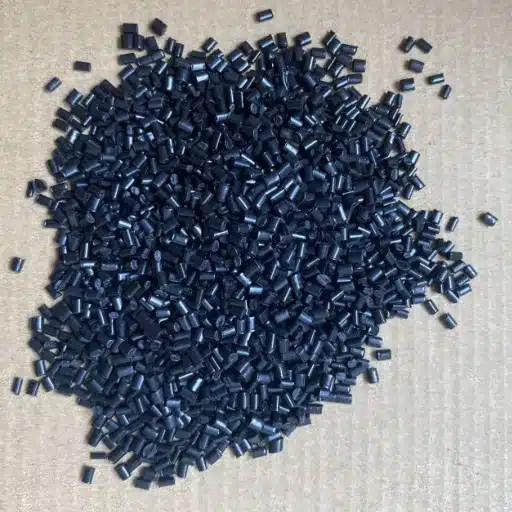
Durability and Impact Resistance
ABS plastic is a name that comes to mind when one wants to think of a durable plastic, not only that, but impact resistance too, hence the reason why many industries seeking strong and long-lasting material have already adopted it as their main one. It has recently been shown that ABS’s characteristic of enduring force without fracture is due to its tricomponent structure consisting of acrylonitrile for chemical resistance, butadiene for toughness, and styrene for rigidity.
Thus, the material is able to take up the stresses and at the same time, it will not break even if the conditions are too much for it. Also, the latest scientific research indicates that even better grades of ABS are now available that have higher tensile strength and better resistance to impact from outside. These advancements not only validate the use of ABS plastic in car and computer parts but also in domestic appliances and manufacturing of elements unseen, like industrial components.
Cost-Effectiveness in Manufacturing
Manufacturing with ABS plastic incurs the least cost of materials, thus, it is still the most cost-effective material due to the low production cost that is allied with the versatile properties of this plastics. It occupies the most favorable spot in terms of price performance, making it the material of choice for mass production operations.
💰 Cost Benefits:
- Less expensive alternative to premium materials while maintaining durability
- Easy processing and recycling capabilities reduce production costs
- Versatile molding options minimize waste
- Faster production cycles increase efficiency
According to recent analysis, ABS plastic is often studied as a less expensive but still durable, and resilient alternative to the more expensive materials. Companies that use ABS plastic often realize less waste and quicker production cycles, making it an economically wise decision across the various industries.
Versatility in Applications
ABS plastic is a highly flexible material and is used in various sectors due to its extraordinary physical properties and easy handling.
🚗 Automotive
Dashboards, bumper covers, trim parts – valued for toughness and aesthetic appeal
💻 Electronics
Keyboards, mice, cases, and covers – excellent insulation characteristics
🏠 Consumer Goods
Appliances, toys, 3D printing – lightweight and durable nature
The lightweight and durable nature of the material make it a common option in the production of household appliances, toys, and even 3D printing; hence it is considered an extensive utility across both industrial and consumer markets due to its cost-effectiveness.
Common Applications of ABS Plastic
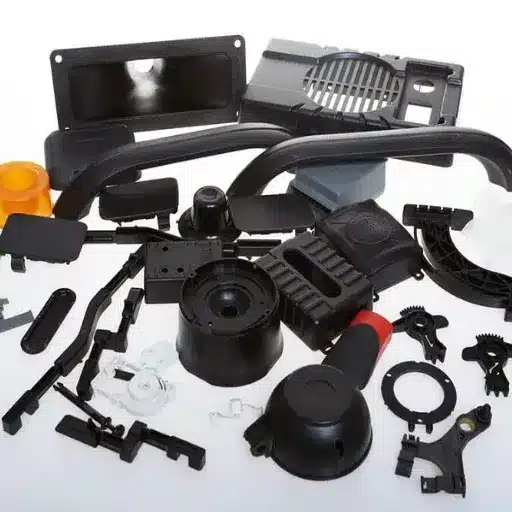
Use in Plastic Parts
ABS plastic is a hugely popular material for producing various plastic parts. These days, it is the most common thermoplastic for injection molding. The new features of ABS plastic can be seen in numerous applications, e.g., in automotive parts like dashboards, interior trim, and wheel covers. The material’s temperature resistance is so excellent that it can withstand both mechanical and thermal stresses and still last for years.
Not only that, but ABS is also an important material in the electronics industry for the manufacturing of such products as TV cases, laptop shells, and gaming console cases, where they require the combination of long-lasting and light-weight attributes. Its superior moldability as well as customization has made the material a go-to in the production of such products as pipes, fittings, and kitchenware which can be considered proof of its versatility across all industries.
📈 Industry Trend: The latest trends show that there is a significant increase in the use of ABS in 3D printing, as its easy-to-shape and wear-resistant quality enhances the prototyping and designing processes’ efficiency. The above instances are just a few reasons why ABS continues to be a major player in the production of reliable and economically priced plastic parts.
Enclosures and Housing
With regard to enclosures and housing, there is no better material than ABS plastic, which is hard-wearing, light, and has the capacity to absorb shocks. Its application extends to producing electronic devices, protecting casings for appliances, and shielding industrial equipment.
Why ABS for Enclosures?
- Perfect electrical insulation properties
- Excellent resistance to physical stress
- Maintains structural strength even in high-temperature conditions
- Can be molded with great precision into intricate shapes
- Ideal for modern gadgets and complex designs
One of the most common and frequently asked questions by users is, “Why is ABS plastic so popular for enclosures?” The main explanation is found in its remarkable physical properties. Together, these pros turn ABS into a popular choice for enclosures and housing solutions among various industries.
Applications in the Automotive Industry
The immense potential of ABS plastic in the automotive sector is its unassailable combination of durability, flexibility, and lightweight. It is widely used in making interior parts like dashboards, door panels, and trims for its long-term aesthetic appeal and impact tolerance. Moreover, ABS has the capability of withstanding extremely high temperatures, which invites its usage in areas under the hood.
The fact that one can produce very intricate shapes from ABS plastic helps in cutting down the design time for chic and comfortable automotive parts. Whereas the report reveals that the demand for ABS in the automotive sector is still on an upward path, with the trends such as EVs and the need for more eco-friendly yet strong materials being the major drivers of this demand. Consequently, this coincides with the focus of manufacturers on upping fuel efficiency and general vehicle performance.
Manufacturing with ABS Plastic
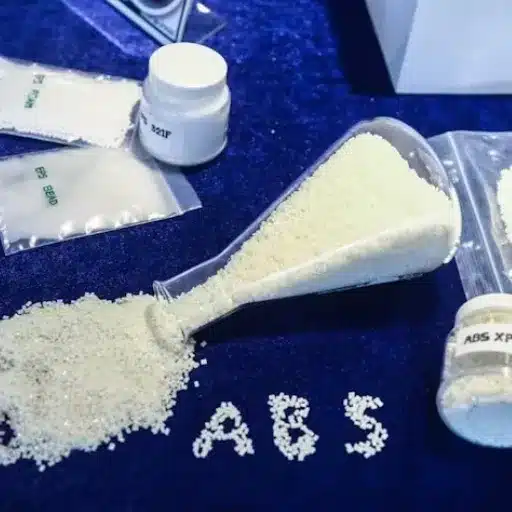
Plastic Injection Molding Process
The plastic injection molding is a quite effective technique for the large-scale production of items made of ABS. The very first step of the method is to raise the temperature of the ABS resin to such an extent that it melts and thus it can be injected into a mold cavity at very high pressure. After the material has cooled and solidified, the part that has been formed is extracted from the mold and it can either be used or undergo further processing.
Injection Molding Steps:
- Heating: ABS resin is heated until it melts completely
- Injection: Molten material is injected into mold cavity at high pressure
- Cooling: Material cools and solidifies in the mold
- Extraction: Formed part is removed from the mold
- Finishing: Part undergoes further processing if needed
This method is very suitable for the mass production of identical parts with high accuracy and uniformity. The latest data indicates that there is a remarkable increase in the number of people who are interested in the use of ABS plastic in injection molding because of its versatility, durability, and environmental friendliness. One of the major reasons for the increased number of searches is the strong and lightweight materials that are being sought by the industries that are innovating, particularly in the automotive and electronics sectors.
Machine Requirements for ABS Processing
In order to process ABS plastic properly, the specific requirements for machines must be met that will guarantee the best performance and product quality.
| Machine Specification | Requirement |
|---|---|
| Barrel Temperature Range | 210°C to 250°C |
| Screw Design | Must uniformly mix material (for additives/colorants) |
| Clamping Force | 4-6 tons per square inch minimum |
| Venting System | Efficient system to prevent trapped gases |
| Cooling System | Precise temperature control for cycle time reduction |
Injection molding machines that are made for ABS processing usually have a barrel with a temperature range of between 210°C and 250°C, since ABS plastic needs such exact melting points for it to be able to flow easily and fill the mold completely. It is also necessary that the machine is equipped with a screw that is designed to mix the material uniformly, since the ABS is very likely to be mixed with additives or colorants. The clamping force has to be more than adequate, with at least 4 to 6 tons per square inch being the suggested figures for the standard mold sizes to avoid flash and have the parts formed properly.
🔋 Energy Efficiency Trend: Recent searches show that more and more manufacturing companies are becoming interested in machines that consume less energy, with servo-driven injection molding machines being the most popular option for those wanting to lower their energy use.
An efficient venting system in the mold design is also very necessary, as the ABS material is easily trapped gases during molding. Cooling systems that combine to maintain the exact temperature control enable the manufacturers to cut down the time taken for the cycle without affecting the integrity of the parts. Following the maintenance schedules and constantly keeping an eye on the machine parameters are the two key measures for preserving efficiency and consistency in the production of ABS parts in the long run.
Advantages of Using ABS in Molding
The molding applications of ABS (Acrylonitrile Butadiene Styrene) are characterized by many advantages, which make it one of the leading thermoplastic polymers in the manufacturing process. The remarkable tensile and toughness properties of the resin allow the making of parts that are not only durable but also suitable for e.g. automotive, electronics, and toys.
Key Molding Advantages:
- Easy to process and can be molded into complicated shapes
- High-temperature resistance with dimensional stability during cooling
- Good compatibility with modifiers and pigments for versatile formulation
- Reasonably priced compared to other high-performance plastics
- Lightweight characteristic without compromising performance
- Can be made from recycled material or made to be recyclable
The material is also very easy to process and can be molded even in complicated shapes, since it has high-temperature resistance and keeps dimensional stability during cooling. Moreover, the plastic’s good compatibility with modifiers and pigments makes it very versatile and allows its formulation to fit the particular application of the end-user.
It is reasonably priced when compared to other high-performance plastic materials, yet it still leaves the impression of being professional and of high quality. Besides, the plastic’s lightweight characteristic combined with its durability makes it possible to reduce the weight of the final product without compromising its performance. The Eco-consciousness of throw-away plastic is being challenged by the technology and recycling processes as ABS can still be made from recycled material or made to be recyclable, thus the global goals for sustainability are being met.
Limitations and Disadvantages of ABS Plastic

Environmental Concerns and Recyclability
ABS plastic, though it has excellent durability and versatility, still raises the question of its environmental impact. The production of ABS, which is sourced from fossil fuels, is energy-intensive and contributes to the release of greenhouse gases. Additionally, ABS is a non-biodegradable material, which leads to concerns if improper disposal occurs because it can remain in the environment for a long time.
♻️ Recycling Progress:
The adoption of recycling technologies and the implementation of sustainable practices are slowly curing these matters. Recycling was quite a challenge before because of the complex chemical nature of ABS, however, there are some locations where ABS can be reprocessed today, and this will lead to a reduction in the use of virgin materials and the burying of waste in landfills.
Some companies are even producing closed-loop systems that contain recycled ABS. They are using it in making new merchandise that conforms with the circular economy. Research into the use of bio-based substitutes and production methods with lower environmental impact is going on indicating the future holding good for sustainability.
Comparative Limitations with Other Plastics
Despite its immense applicability, ABS is still limited when stacked against other plastics.
| Limitation | Description |
|---|---|
| UV Resistance | Not suitable for outdoor applications without protective additives due to degradation and discoloration |
| VOC Emissions | Higher volatile organic compounds emissions during manufacturing and usage compared to alternatives |
| Heat Resistance | Moderate heat resistance, not comparable to PEEK or high-performance engineering plastics |
| Environmental Burden | Higher production impact compared to bioplastics or newer eco-friendly polymers |
A very prominent disadvantage would be its not so high tolerance to UV rays, which might lead to degradation and discoloration when exposed to prolonged sunlight hence it is not suitable for outdoor applications without protective additives. Moreover, ABS causes more volatile organic compounds (VOCs) emissions during manufacturing, sometimes even during usage, raising concerns about air quality impacting human health when cheaper alternatives like polycarbonate or polypropylene can be lessening emissions.
Another limit is the material’s moderate heat resistance, which suffices for a number of applications but is not comparable to that of PEEK or high-performance engineering plastics used in extreme environments. Moreover, ABS is often associated with higher environmental burden during production involving its manufacture when compared to some bioplastics or newer eco-friendly polymers. Therefore, it is important when making applications for specific uses to not only consider the advantages but also these limitations.
Potential Applications Where ABS is Not Ideal
ABS can be found in various industries, but some applications point to its weaknesses. For example, ABS is not very reliable at high temperatures, hence, its melting point is quite low leading to softening or loss of strength. Also, in the case of the chemical resistance where hardness and UV light are the main factors, ABS is not the material since it can lose its strength and become brittle after some time.
❌ Not Recommended For:
- Extreme Temperature Applications: Aerospace and automotive parts subjected to extreme conditions
- Outdoor Exposure: Applications requiring long-term UV resistance without additives
- Chemical-Intensive Environments: Where hardness and chemical resistance are critical factors
- Eco-Focused Industries: Where biodegradable or recycled polymers are mandated
The aerospace and automotive industries might choose PEEK or other specialized composites for parts subjected to extreme conditions. Moreover, eco-friendly industries tend to keep away from using ABS since it impacts the environment more than the alternatives like biodegradable plastics or recycled polymers. The encouragement of biodegradable materials by technological developments and tougher regulations has then made it necessary for ABS to show up in less significant applications. Such trends suggest that proper material selection according to performance, environmental impact, and industry needs is going to be crucial.
Frequently Asked Questions (FAQ)
❓ What does ABS plastic stand for?
ABS plastic stands for Acrylonitrile Butadiene Styrene, the name of the versatile and strong plastic. It is produced by the polymerization of styrene and acrylonitrile in the presence of butadiene, the latter being the reason for its very high impact resistance and ductility. This engineering plastic is incredibly versatile and finds its way into a vast number of applications ranging from consumer goods to industrial equipment and even electronic housing. Thanks to its properties, ABS can be easily shaped into complex parts and is therefore used by manufacturers to achieve a variety of ABS components. Furthermore, ABS recycling is allowed and thus considered to be a safe and eco-friendly choice in a large number of industries.
❓ What are the advantages of ABS plastic?
The advantages of ABS plastic are its excellent strength-to-weight ratio, good insulation against electricity, and resistance to mechanical stress. Those properties determine the demand for ABS in the applications that need a quality, light weight and durable components.
Besides that, the processing of ABS is simple and quick, through methods such as injection molding, which results in the fast production of even the most complex designs. Furthermore, blending of ABS with others has become one of the most important areas of ABS versatility, allowing the designer to specify the properties required to meet customer needs.
Besides, ABS’s fire-resistant grades are standard, allowing it to be adopted where safety against fire is an issue.
❓ What are the disadvantages of ABS plastic?
ABS plastic, while very advantageous, still has limitations. The most significant of these is the fact that it is degrading under UV-light exposure which eventually leads to loss of color and weakening of material. Moreover, though generally resistant to chemicals, some solvents do have a negative impact on ABS.
Another factor leading to material variance is its manufacture; thus, it is not uncommon for the lower-quality ABS brands to be inconsistent. Thus, it becomes imperative for the manufacturer to carefully determine the ABS grade that is suited to the specific application.
Finally, even though ABS can be recycled-indicative of its eco-friendliness- there are still some difficulties in managing it practically because recycling facilities for ABS are not as extensive as those for other types of plastics.
❓ What is the application of ABS plastic?
Due to its properties, ABS plastic is widely used in different applications. The factors like its impact resistance plus durability make it the right choice for production targeting mainly consumer goods, car parts, and housing for electrical and electronic devices.
Furthermore, ABS is 3D printer friendly, hence allowing the rapid prototyping and designing of complicated plastic components. The medical field also benefits from the strengths and safety characteristics of ABS, as the material is approved by the Food and Drug Administration for certain surgical devices.
To sum up, the versatility of ABS plastic in terms of molding into a very wide range of product shapes has made it a key player in the manufacturing sector.
❓ Can ABS plastic be recycled?
Yes, ABS plastic is a type of plastic that can be recycled and is viewed as a recyclable material. It can be reformed and processed into new products, which helps to prevent landfills and use fewer resources. Honestly, however, even though ABS is recyclable, the recycling rate of this plastic is significantly lower than that of some other popular and less expensive plastics like PET.
For recycling to be successful, it is necessary for both consumers and manufacturers to sort and throw away correctly the ABS plastic items. Some plastics recycling companies are already making concrete steps towards improving ABS recycling processes and thus contributing to a circular economy of living in the plastics industry.
Overall, though ABS is recyclable, there are still a lot of structural and practice-related advancements that will be needed before its environmental benefits can be fully realized.
📚 Reference Sources
Brigham Young University – Rotational Molding of Acrylonitrile-Butadiene-Styrene (ABS): Discusses the development and applications of ABS resins in rotational molding, highlighting its performance characteristics. Source
University of Arizona – ABS Plastic Overview: Provides insights into ABS plastic as a widely used thermoplastic polymer, emphasizing its strength, flexibility, and impact resistance. Source
Michigan State University – Polymers: Explains ABS as a terpolymer used in high-impact containers, pipes, and gaskets, detailing its chemical composition and applications. Source







